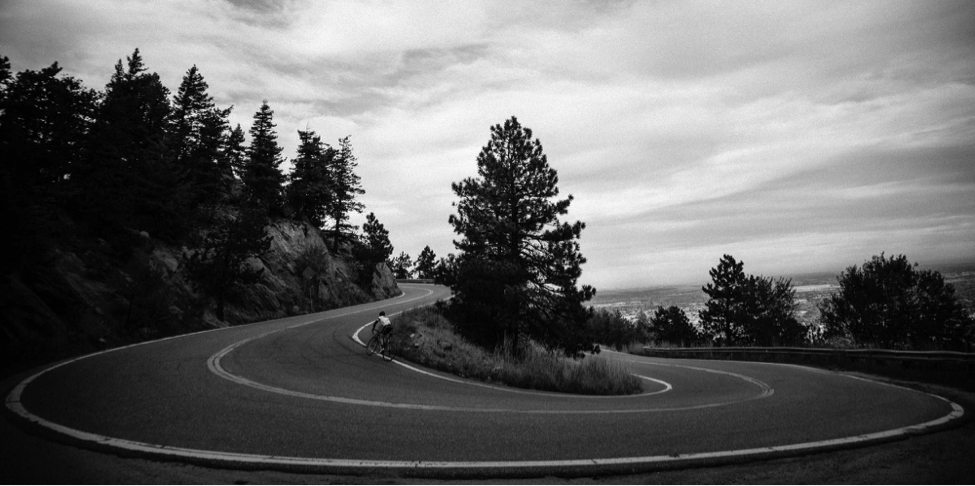Even if we are not preparing to race in the Tour anytime soon, it is an important skill to become a strong climber for any cyclist. With increased metrics provided to riders at the touch of a button, it is easier than ever to track your performance and improvement in cycling across the board. Having a good understanding of not only your strengths but weaknesses too can help you to hone in on the specificity of what you’ll need in order to achieve your biggest gains.
What Should You Focus On?
When identifying your biggest gains in climbing, most individuals immediately think of dropping weight. The lighter you are the faster you’ll be, right? While we can’t deny that weight does play into climbing performance, it should not be the top target or goal for initial performance gains.
So then what should your focus be on? Below we will list three pieces to target:
- Increasing power output
- Pacing your power output
- Working on maintaining focus and proper mechanics
Why Not Weight?
Yes, your watts/kg make a difference in how fast you will go for a given power output, but the focus on the above factors are much more actionable. Oftentimes, people go overboard on the focus for watts per kilogram, when this should be one of the last factors to consider in performance gains. If you still are set on focusing on weight, make the weight be about the bike, and not yourself as a rider. A few important keys to consider are rotating weight on the bike, specifically wheels and tires.
Increasing Power Output
First, you want to build a strong base, which is established not only by muscular strength but also by muscular endurance. This is why increasing your power output is crucial.
If you are a SYSTM user, then we recommend the following workouts for specific climbing efforts:
- The Chores
- Defender
- Attacker
For longer efforts we suggest:
- ISLAGIATT
- Thin Air
- Cobbler
- Blender…because it hits a bit of everything!
Why these sessions? We are looking to increase your ability to not only hit higher power but to then also recover quickly from these efforts. When you are climbing, depending on the climb, there is no reprieve in the effort. You need to build the endurance to handle putting out power for sustained periods of time.
Pacing Your Effort
We just touched upon a key piece of climbing: sustained power for prolonged periods of time. If you’re about to tackle a 45-minute climb through the mountains, you won’t be able to start off guns blazing at your VO2 Max power. You will need to learn how to pace and maintain a manageable power for the entirety of the effort in order to maximize your ability. The other key piece of pacing during a climbing effort to your ability to adapt to changes in the pitch of the climb. For example, it is best to push harder when it is steeper versus easing up when the gradient decreases. You can go faster with less average power if you push harder in the steeper sections and go easier in the less steep sections.
Maintaining Proper Mechanics
Another key piece to harnessing greater climbing ability is to remain engaged in your body’s mechanics throughout the effort. Are your shoulders tense? Do you notice your body wavering back and forth? What are the main muscle drivers of the effort?
While you may be only able to solely focus on how hard the effort feels; next time take a second to think about what your body is doing. By periodically practicing a systems check on your shoulders, core, glute, hands, etc, you can begin to become aware of where points of weakness in your own mechanics are.
Where should you begin? Take an intake of your core strength! This doesn’t just mean your ability to do sit-ups, but good core control. Your core includes more than just your 6-pack, specifically, it refers to all of the muscles in your lumbopelvic complex. This means both your deep and superficial core muscles. Your core helps you not only flex your trunk but most importantly to protect your spine in bracing. It can also be thought of as your power transfer station. When you press into the pedal, if your core isn’t engaged or if it isn’t trained to handle the load, then power can be lost in the pedal stroke due to laxity in your upper body. Don’t lose those precious watts! Focus on exercises that can help target your transverse abdominal muscles, internal/external obliques, as well as your glutes and lower back musculature.
Other factors to consider when focusing on your body mechanics include having a relaxed upper body. Do you tend to have a death grip on the bars when you’re in the middle of a climbing effort? Try to see if you can loosen up your grip and drop your shoulders. Try taking a deep breath and focus on the exhale to help encourage your diaphragm and shoulders down to relax.
When it comes to climbing, the best way to get better is to simply climb. Consistency, as always, is the key to mastering any skill in cycling. Continuing to challenge and progress your abilities will help not only increase your strength and endurance but help you to build confidence as well!



